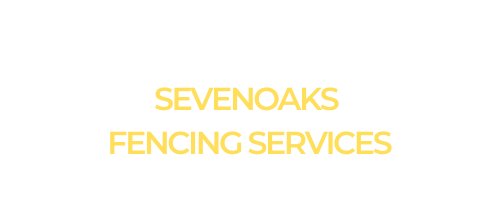6 Signs of Poor Fence Installation
A well-installed fence not only defines boundaries but also enhances privacy, improves security, and adds value to your property. However, when a fence is installed poorly, problems can begin to appear far sooner than expected — from leaning posts to uneven panels and gaps that compromise appearance and durability.
At Sevenoaks Fencing Services, we’ve helped many homeowners across Sevenoaks and Kent correct the mistakes of substandard installations. Knowing what to look for can help you spot early warning signs before the entire structure needs replacement.
Why Fence Installation Quality Matters
A fence is only as strong as its foundation and workmanship. Even the best materials will fail if installed incorrectly. Poor installation can lead to structural instability, reduced lifespan, and higher maintenance costs. By recognising the common signs of bad workmanship, you can take timely action to restore your fence’s strength and appearance.
1. Leaning or Uneven Fence Posts
Fence posts are the foundation of any fencing system. If they’re not installed properly, the entire fence loses its structural integrity.
Common Causes
- Shallow post holes that don’t reach a stable depth.
- Lack of proper concrete footing or compacted base.
- Incorrect spacing or misalignment during installation.
- Weak or rotted post materials.
Why It Matters
When posts begin to lean, the rest of the fence follows. A tilting fence is not just unsightly — it’s unstable and vulnerable to collapse in strong winds.
At Sevenoaks Fencing Services, we ensure all posts are set at the correct depth and alignment to create a strong and level foundation that lasts for years.
2. Uneven or Misaligned Panels
One of the most obvious indicators of poor fence installation is inconsistent spacing or height between panels. Even a small variation can make the entire fence look crooked and unfinished.
What Causes This Issue
- Inaccurate measurements or uneven ground preparation.
- Failure to adjust for slopes or gradients.
- Poorly fixed panel brackets or fastenings.
A professional installation accounts for natural ground contours and uses techniques that maintain an even height throughout, giving a neat and visually appealing finish.
3. Gaps Between Panels or Posts
Visible gaps between panels or posts compromise privacy and allow pets or debris to pass through. This is particularly problematic in garden or residential fencing where security and appearance are key.
Likely Causes
- Incorrect panel size or spacing.
- Warped timber due to improper treatment.
- Lack of expansion allowance in the installation process.
How It Affects Your Fence
Over time, these gaps widen, allowing wind and rain to put extra pressure on weakened sections. Professional installers such as Sevenoaks Fencing Services always ensure accurate measurements and secure fittings to avoid this issue.
4. Poorly Fixed or Rusting Fastenings
Fastenings such as nails, screws, and brackets hold your fence together — and when they’re not installed or chosen correctly, they quickly become weak points.
Warning Signs
- Loose or missing screws.
- Rusted or corroded metal fittings.
- Panels rattling or moving in the wind.
These are often signs that low-quality materials were used or that fittings weren’t properly secured. Proper fencing installation involves using durable, weather-resistant fasteners to ensure long-term stability.
5. Water Pooling Around Fence Bases
Water collecting at the base of your fence can accelerate timber rot and lead to premature failure. This issue typically stems from poor ground preparation or incorrect post setting.
Underlying Causes
- Posts not set with adequate drainage.
- No gravel or drainage layer at the base of post holes.
- Fence line installed in an area with poor runoff management.
The Consequences
Standing water weakens the post bases, causing movement, rot, or corrosion depending on the materials used. At Sevenoaks Fencing Services, we use proper base preparation and ensure every fence line has sufficient drainage to prevent water-related damage.
6. Lack of Structural Reinforcement in Corners or Gates
Gates and corners are stress points that experience frequent use and additional load. If not reinforced correctly during installation, these areas tend to loosen or warp quickly.
Signs of Weak Reinforcement
- Gate frames that sag or fail to close properly.
- Corner posts shifting or leaning outward.
- Hinges and latches becoming misaligned.
A professional installation ensures gates and corners are reinforced with stronger posts and cross-bracing to maintain long-term stability.
How to Avoid Poor Installation from the Start
Choosing a professional and experienced fencing company makes all the difference. With expert planning, precision installation, and high-quality materials, you can be confident that your fence will remain strong, secure, and attractive for years.
Professional Installation Ensures:
- Correct depth and alignment of posts.
- Secure, weather-resistant fittings.
- Accurate spacing and panel positioning.
- Proper treatment and protection of timber.
- A clean, consistent finish across all sections.
At Sevenoaks Fencing Services, we take pride in delivering reliable fencing solutions across Sevenoaks and Kent, ensuring every project meets the highest standards of durability and craftsmanship.
Conclusion
A poorly installed fence can cause ongoing problems — from leaning posts and uneven panels to structural failure and water damage. By recognising these six signs of poor installation early, homeowners can take action before the situation worsens.
Sevenoaks Fencing Services in Sevenoaks, Kent, provides expert fence installation and repair services that prioritise strength, appearance, and longevity. Whether you need a new fence or want to fix existing issues, our experienced team ensures your fencing stands strong against time and weather.
Call us on: 01732 904 194
Click here to find out more about Sevenoaks Fencing Services
Click here to complete our contact form and see how we can help with your fencing needs.

